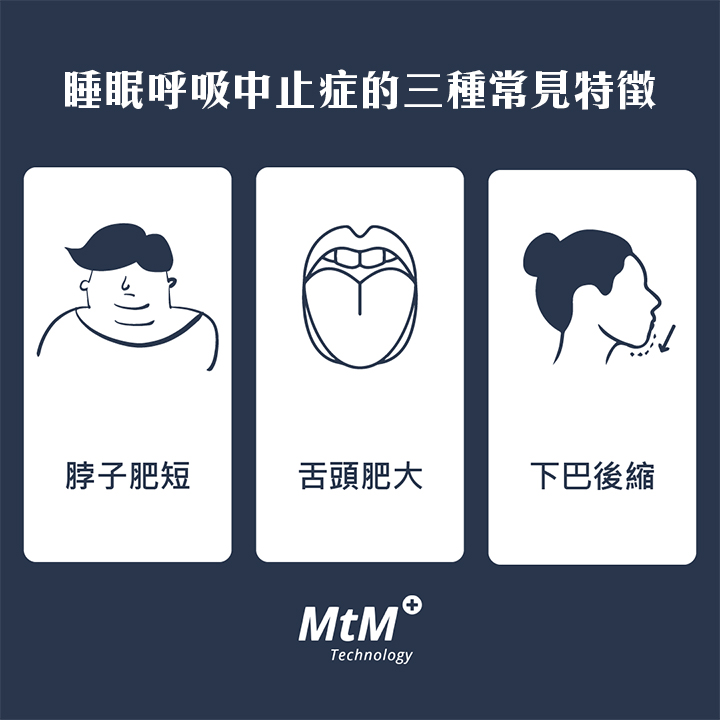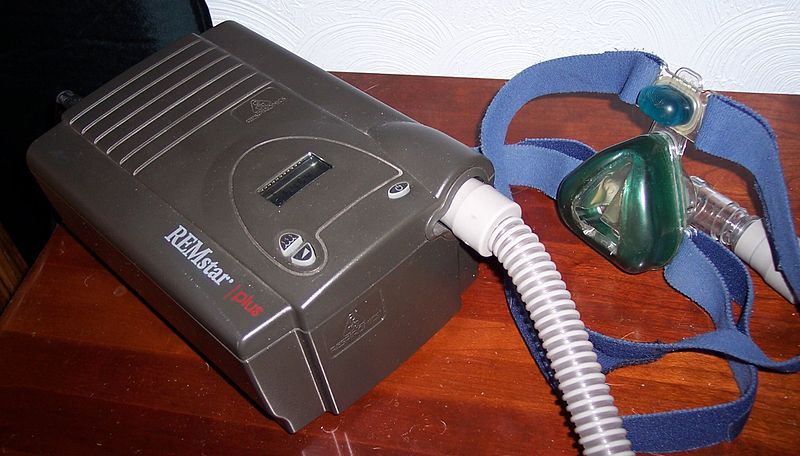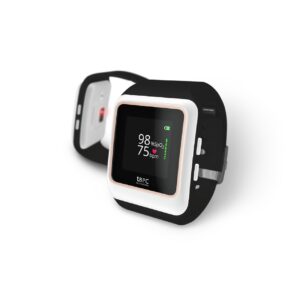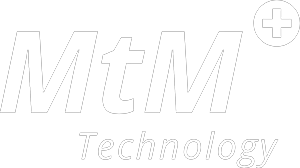What is Sleep Apnea?
Sleep apnea, also known as happy hypoxia or sleep apnea, is a risk factor for cardiovascular diseases. Many studies have confirmed that sleep apnea can cause chronic diseases that are difficult to control. For example, the probability of suffering from high blood pressure is higher than that of ordinary people. Similarly, there are Patients with high blood pressure are also more likely to suffer from sleep apnea at the same time, and sleep apnea is divided into obstructive sleep apnea (OSA), central sleep apnea (Central sleep apnea, CSA) and Compound sleep apnea (Mixed sleep apnea, MSA), also known as mixed sleep apnea, central sleep apnea is a disease of the brain's breathing center, resulting in the inability to send out breathing messages, which need to rely on sleep monitoring to distinguish, compound sleep apnea Suspension means that the brain cannot send a breathing signal and at the same time, the airway is blocked. Since 85%-90% of patients are obstructive sleep apnea, this article focuses on obstructive sleep apnea.
Obstructive sleep apnea causes patients to repeatedly lack air and hypoxia during sleep. During the process of waking up, it promotes sympathetic nerve activity, triggers the constriction of peripheral blood vessels, and causes blood pressure to soar repeatedly between each breath. Long-term The probability of suffering from high blood pressure, myocardial infarction, angina pectoris and other cardiovascular diseases is higher than that of ordinary people, and the cerebral cortex will also degenerate early, and in severe cases, it may even lead to sudden death from stroke!

How is sleep apnea triggered?
Sleep apnea occurs because the upper respiratory tract (including the nasopharynx, oropharynx, and throat) collapses repeatedly during sleep, which leads to blockage of the airway, resulting in shallow and laborious breathing, and in severe cases, complete blockage of the airway , resulting in the situation of not being able to breathe air and suffocation, so it is called sleep apnea, and most people are caused by obesity, which causes airway narrowing or lack of muscle tension to maintain airway smoothness, and it is easy to collapse. Of course, some people are Due to congenitally small or retracted chin, tonsils, overhanging or congenital craniofacial defects, resulting in narrow airway.
Common features of sleep apnea
Because obstructive sleep apnea is closely related to body structure, it can be easily judged through some superficial observations, so as to think whether you meet the common triggering characteristics.
- Fat and short neck
A man with a neck circumference greater than 43 cm or a woman with a circumference greater than 38 cm is at high risk. - tongue hypertrophy
If no uvula can be seen when opening the mouth and sticking out the tongue, there may be narrowing of the upper airway. - Chin retraction
The chin is narrow and retracted, and the trachea is easily blocked when lying down.

Sleep apnea trigger process
Sleep apnea may seem like a small problem, but the long-term results will lead to some complications. The initial metabolic hormone abnormalities cause diabetes and obesity, and later high blood pressure, stroke and sudden death may all come from sleep apnea.
- When you sleep, the body struggles to breathe due to poor breathing, which increases the workload on the heart.
Effects: Possibility of ventricular failure. - The body begins to lack oxygen, and the carbon dioxide in the body increases.
Effects: Abnormalities in vasoconstriction and metabolic hormones. - The body is awakened, and the breathing is adjusted to go back to sleep.
Impact: Being in a light sleep state all the time can easily cause the body to never really enter a deep sleep.
How to Diagnose Sleep Apnea by Symptoms?
The easiest way to judge sleep apnea is to observe the snoring during sleep. If you have apnea during sleep, you are overweight, have a short neck, have high blood pressure or diabetes at a young age, etc., you can observe and communicate with others. According to the data, it is recommended to seek medical attention first and seek professional medical assistance for conditions such as asthma, heart attack or stroke at night, and for daytime sleepiness, it is easy to fall asleep in a short period of time during meetings or watching TV. If you doze off, or have a car accident or accident due to dozing off, you can observe by yourself. If you meet multiple symptoms, you can suspect the possibility of sleep apnea. The following common symptoms can be used for reference.
Common Symptoms of Sleep Apnea
- Drowsiness during the day can cause inability to concentrate for a long time, and it is easy to doze off while driving, and even cause car accidents.
- Angina pectoris, myocardial infarction, or cerebral apoplexy occur during normal sleep, which may lead to sudden death during sleep.
- Young people have problems such as obesity, diabetes, high blood pressure, irregular heartbeat or heart failure.
- Rapid memory loss in the short term, although this may also be associated with early onset dementia.
- Changes in personality traits (such as anxiety, insomnia, bad temper, restlessness, etc.), even including patients with depression or insomnia.
- Decreased libido resulting in sexual dysfunction.
- Frequent urination during night sleep is obvious.
- Abnormal body movements during night sleep, such as sleepwalking, sleep talking and nightmares.
Severity index of sleep apnea
目前評估睡眠呼吸中止症的黃金標準方法是睡眠多項生理檢查(PSG),而呼吸中止指數(AHI)是當中最廣泛參考的指標,根據臨床試驗,血氧濃度下降指數或血氧飽和度下降指數(ODI)與呼吸中止指數(AHI)具有高度關聯性,因此在醫療數據判斷上,ODI為AHI的初步篩檢參考的重要依據,而ODI可分為3%及4%來記錄血液含氧量(SpO2%),在根據睡眠缺氧的狀況,計算出每小時血氧濃度下降3%與4%的次數,以下提供血氧濃度分級供參考,更深入的說明請參考ZionCare SpO2 Classification During Sleep。
Sleep blood oxygen concentration grading
- L1: Normal: ODI 3% < 5
The number of oxygen desaturation drop per hour of sleep is in the normal healthy range. - L2: Mild: 5 ≦ ODI 3% <15
The number of oxygen desaturation drop per hour of sleep is slightly higher, please continue to track and observe. - L3: Moderate: 15 ≦ ODI 3% <30
The number of oxygen desaturation drop per hour of sleep is higher than the standard range, it is recommended to consult a professional doctor. - L4: Severe: 30 ≦ ODI 3% or T88 ≧ 3%
The number of oxygen desaturation drop per hour of sleep or the cumulative time with low oxygen saturation is much higher than the standard range, it is recommended to seek further diagnosis by a professional doctor immediately.
How can sleep apnea be improved?
There are hundreds of ways to improve sleep apnea. There are products on the market that use negative pressure tongue suction machines to ensure that the tongue does not fall backwards. Some are anti-snoring braces or masks. The following habits can also be used to improve sleep quality while relying on additional devices.
Common ways to improve sleep apnea
- Weight Loss: Losing even a tenth of your body weight can reduce the frequency of apnea for most patients, and weight loss is usually the first priority in treating apnea.
- Sleeping on the side: Sleeping on the back will narrow the airway, making sleep apnea more likely to occur, while sleeping on the side will reduce the incidence, so it can be improved by using special pillows or side sleeping aids.
- Nasal Congestion Relief Medications: People with sinus problems or nasal congestion can reduce snoring with nasal sprays, breathing patches, or nasal congestion medications, which can improve airflow for more comfortable nighttime breathing and a healthier sleep quality.
- Avoid Alcohol and Hypnotic Drugs: Do not drink alcoholic beverages before bedtime, and avoid sedative hypnotic drugs before bedtime, as this will make the airways more relaxed, making it easier to collapse during sleep, prolonging the duration of apnea.
What are the treatments for sleep apnea?
If the above improvement methods cannot relieve sleep apnea, more advanced treatment methods may be considered. However, it is recommended to seek professional testing and advice from a doctor before adopting the following treatment options. After all, treatment methods will vary from person to person. In addition to selecting according to the indicators of severity, clinical examination of the location of the overhang is also quite important.
Common sleep apnea treatments
- Non-invasive treatment: such as oral braces, can reduce snoring and reduce the degree of sleep apnea, and a small number of patients can eliminate sleep apnea.
- Surgical treatment: such as cutting enlarged tonsils and adenoids, widening the upper respiratory tract, orthognathic surgery, uvulopalatopharyngeal plastic surgery (UPPP surgery), minimally invasive soft palate anti-snoring stent implantation surgery , distraction osteogenesis, etc.
- Medication: Currently there is no effective drug to treat OSA, but treating nasal allergy can slightly improve the symptoms of OSA.
- Instrument treatment: such as wearing a ventilator during sleep, a continuous positive airway pressure (CPAP) (Continuous Positive Airway Pressure, CPAP) (Figure 3) adjusted by a doctor and a respiratory therapist (Figure 3) uses air pressure to open the upper respiratory tract, improve sleep quality, and breathe According to its function, it can be divided into single pressure (CPAP), automatic pressure adjustment (Auto CPAP), bi-pressure (BiPAP), etc., which is currently one of the standard treatment methods for adult sleep apnea, and currently obstructive sleep apnea Among the patients with apnea, less than 10% are willing to accept the use of CPAP. The reason is that it is too bulky and inconvenient to carry. If you want to use a light instrument for sleep apnea detection, please refer to Wearable pulse oximeter (Figure 4), early Understand sleep status through simple wearable devices to reduce the probability of chronic diseases.
- Others: Fitness, dental (surgical) surgery, smoking cessation, alcohol cessation, and sleeping pills all help relieve the condition.


How is sleep apnea detected?
The most accurate option for sleep testing is of course outpatient clinics, but the cost of testing is relatively high. In addition to cost considerations, you also have to queue up to match the outpatient clinic hours. If you need to sleep in a sleep center for one night, your working hours may also be affected. This is also the fundamental reason why the medical community estimates that 12% (2.3 million) adults in Taiwan suffer from sleep apnea, but fewer than 5,000 actually seek medical treatment. Therefore, if you want to check yourself first, you can give priority to blood oxygenation. Wearable devices such as mobile phones to record the status of hypoxia at night, and also attach the unit for sleep apnea hypoxia detection and cooperation with Frontier Technology for reference.
Common Sleep Detection Methods
PSG sleep multiple physiological examination
- Where to check: Hospital or sleep center
- Waiting time for screening: 6~9 months
- Report output time: about 2 weeks
- Detection line: about 20 detection lines
- Continuous multi-night monitoring: Difficult to implement
- Relevant certification: FDA
- Test items: EEG, electrooculogram, electromyogram, electrocardiogram, apnea index, blood oxygen saturation, blood oxygen concentration drop index, snoring
- Advantages: Monitor multiple data at once
- Disadvantages: The time needs to be coordinated with the hospital, and it takes a long time to obtain the report, and most people think that it is difficult to obtain objective data while sleeping in an unfamiliar environment and wearing multiple detection lines on the body
- Reference: Taiwan Sleep Center Outpatient Test
Home sleep detection device
- Check location: home
- Waiting time for inspection: 1~2 days
- Report output time: Immediately, can be viewed through the App
- Detection line: no
- Continuous multi-night monitoring: easy
- Relevant certification: FDA/TFDA/TGA/CE
- Test items: SpO2, ODI, PR, RR
- Advantages: Comfortable to wear while sleeping at home, and easy to perform multi-night monitoring to gain insight into sleep trends, and check medical-grade data directly through the App the next day
- Disadvantages: It is not as good as hospitals and sleep centers that can monitor various data at one time, and can only accurately monitor data related to sleep apnea
- Reference: Wearable pulse oximeter machine
Taiwan sleep center outpatient testing
* Certified by the Taiwan Society of Sleep Medicine



